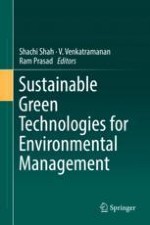2019 | OriginalPaper | Buchkapitel
5. Phytoremediation: An Alternative Tool Towards Clean and Green Environment
verfasst von : Sandhya Misra, Krishna G. Misra
Erschienen in: Sustainable Green Technologies for Environmental Management
Verlag: Springer Singapore
Aktivieren Sie unsere intelligente Suche, um passende Fachinhalte oder Patente zu finden.
Wählen Sie Textabschnitte aus um mit Künstlicher Intelligenz passenden Patente zu finden. powered by
Markieren Sie Textabschnitte, um KI-gestützt weitere passende Inhalte zu finden. powered by
